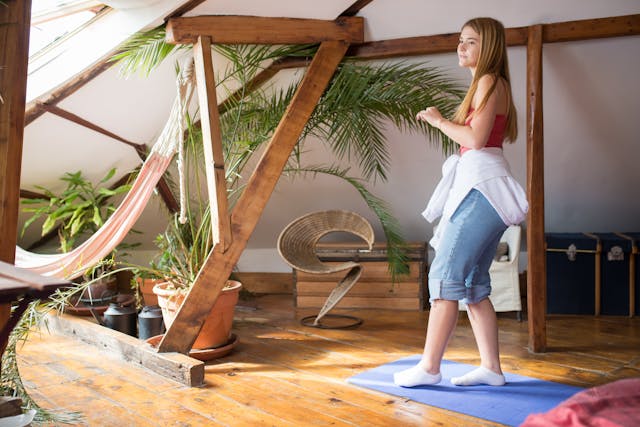How Architecture Firms Design Interiors To Promote Health And Minimize Allergens
Wellness is becoming a central focus in our living and working environments. Architecture firms are rising to the challenge by incorporating beauty, functionality, and health-conscious design into their projects. Their work now extends beyond aesthetics to include features that promote health, well-being, and allergen reduction. By integrating elements such as natural light, non-toxic materials, efficient ventilation, and greenery, they are creating spaces that enhance quality of life and support healthier living.
This shift demonstrates how architecture firms are placing a higher priority on wellness through the use of natural light, non-toxic materials, and improved ventilation. These designs showcase an understanding of how our surroundings impact our physical and mental health, resulting in spaces where individuals can thrive. As buildings increasingly focus on well-being, the connection between architecture and health continues to strengthen.
Embracing Natural Light
Natural light plays a crucial role in interior design. Large windows and skylights bring in sunlight, transforming spaces into vibrant and uplifting environments. Beyond aesthetic improvement, daylight fosters a sense of openness and connection to the outdoors. Exposure to sunlight can enhance mood, boost productivity, and create a welcoming ambiance. Architects now view these features as essential for creating healthier living spaces.
Incorporating natural light not only reduces the need for artificial lighting, but also cuts costs and benefits the environment. By harnessing sunlight during the day, energy consumption decreases. Thoughtfully positioned windows and skylights maximize natural light, minimize glare, and enhance comfort.
Choosing Non-Toxic Materials
The selection of materials significantly influences indoor air quality. Architecture firms are now prioritizing non-toxic, low-VOC (volatile organic compounds) options for paints, flooring, and furnishings. These choices help enhance air quality by minimizing the use of chemical-laden products. Many conventional materials release VOCs, which can lead to irritation and long-term health issues. By opting for safer alternatives, architects are creating healthier and more comfortable spaces.
The shift towards non-toxic materials goes beyond risk reduction; it signifies a strong emphasis on occupant well-being. Incorporating natural elements like recycled wood or low-VOC paints connects spaces to nature and sustainability while also promoting health. Features such as organic textiles and eco-friendly finishes further encourage the creation of healthier living environments.
Implementing Efficient Ventilation Systems
Proper ventilation is essential for maintaining healthy indoor air quality. Architecture firms are now integrating advanced ventilation systems into their designs to enhance air quality. These systems filter out dust, pollen, and allergens while facilitating the circulation of fresh air, making spaces more comfortable. Strategically placed vents help optimize airflow and balance indoor and outdoor environments.
Effective ventilation goes beyond comfort—it supports health. Poor air quality can lead to respiratory issues and fatigue, hampering productivity. By prioritizing air filtration and circulation, architecture firms are tackling these issues proactively. Modern systems automatically adjust to indoor conditions, ensuring optimal air quality levels. This approach helps create healthier and more invigorating spaces for all occupants.
Utilizing Plants for Improved Indoor Air Quality
Incorporating indoor plants is a simple yet effective way to enhance air quality and create more inviting spaces. Plants naturally purify the air by absorbing carbon dioxide and releasing oxygen, resulting in a cleaner and more dynamic atmosphere. Many architects now view greenery as a crucial feature, seamlessly integrating it into their designs to evoke a sense of calm and a closer connection to nature.
Biophilic design emphasizes the relationship between individuals and nature, offering both mental and physical health benefits. Architects strategically incorporate plants into room layouts to enhance air quality and mood. Various plant species can complement different design aesthetics while addressing air quality concerns. This approach blurs the boundaries between indoor and outdoor spaces, directly contributing to well-being.
Flexible Space Planning
Flexible space design transforms how areas are utilized, making them more comfortable and functional. Architects focus on layouts that can adapt to diverse activities and individual requirements. Open floor plans, movable walls, and multi-purpose furniture offer versatility, supporting collaboration and personal time. These designs depart from rigid configurations, creating spaces that alleviate stress, stimulate creativity, and foster interaction.
By emphasizing flexibility, architects address the evolving demands of contemporary life. Spaces for work, relaxation, and socializing seamlessly blend, aiding individuals in managing their tasks more efficiently. Providing personal space within shared areas nurtures connections and helps individuals flourish.
Architecture firms are reshaping design by emphasizing wellness and functionality in living and working environments. By integrating natural light, non-toxic materials, efficient ventilation, and greenery, they are crafting environments that promote health on both physical and mental levels. Flexible layouts adapt to modern needs, enhancing comfort and reducing stress. This approach transcends aesthetics, acknowledging the vital link between surroundings and well-being. As these designs gain momentum, they set a standard for healthier, more harmonious spaces where individuals can live, work, and thrive in synergy with their environment. This shift reflects an increasing recognition of how thoughtful architecture enhances overall quality of life.
